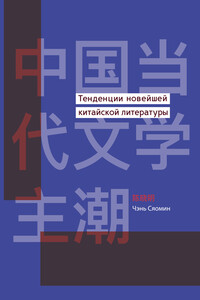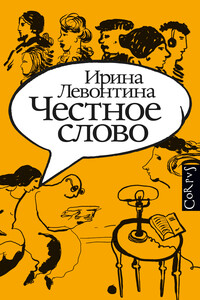Английский язык для судовых электромехаников - [61]
8
Complete the sentence in such a way that it makes sense.
Some programming is performed. . . (a) by jumpers on the mother board, b) by a flexible ribbon cable, c) by the synchronizing and load sharing units.
9
Choose the proper translation. Most shaft generator design, а) самая большая конструкция валогенератора; б) конструкция само-
го большого валогенератора; в) конструкция большинства валогейе-раторов.
10
Choose the proper translation. Normal input generator operation, а) работа обычного входа генератора; б) обычная работа входного генератора; в) обычный ввод работающего генератора.
11
List a step-by-step procedure for starting the engine from the engine control room. Write 10 sentences.
Sum up your results. Time. . . Score. . . Mark. . .
THE NINTH TERM (20)
UNIT 4
E L F. CT R О NIC AUTOMATION
SECTION! (4-f-1 +4)
Bridge Manoeuvring System Text
Daily Use of the Bridge Manoeuvring System
1. Preparation and change over. Preparation and change over of the engine for the bridge control should be made in accordance with the instructions issued by the engine builder. The following points should be noted: The pump station for the hydraulic amplifier is started to provide oil pressure in the amplifier.
The automatic stop piston valve must be turned to the ‘'Service" position.
2. Control Panel.
Check that the test telegraph switches on the mimic diagram are in the "Normal” position.
3. Check also that the switch in the engine speed test unit is in the "Tacho” position. If this switch is left in the "Test'’ position, the unit lamp will light up. If a start attempt is made, registration of the engine’s turning will not take place and the tacho arid repeated start supervision unit (IRS) will register (lie missing tacho signal, and after 6 ry^tart blocking and a tacho failure alarm will be initiated. If the control system is not furnished with a TRS Unit, starting air will be admitted until the pressure switch is activated.
4. The overspeed, slow turning, load program and reversing level switches on the mimic diagram arc to be placed in the "On” normal position in order to incorporate these functions.
5. Check with the aid of incorporated voltmeter that all necessary voltages are present.
6. Check that the power supply switch is in the "Normal” position, if it is in the “Battery” position, the system will still he able to work, but normal running calls for the switch in the “Normal” position. Remember to press button if a change over from “Battery” to “Normal” becomes necessary.
7. Examine whether any of the lamps in the signal panel for emergency are lit up. If some are lit, the indicated fault should be remedied.
8. Check whether the safety panel shows any alarms or any shut- or slow-down channels. The lamps in the panel are extinguished under normal conditions. If an alarm occurs, the lamps will light up strongly. If a channel has been “pushed" out of working order, the lamp will continue to light up weakly provided there is no alarm on the channel. If an alarm occurs on a channel, the lamp will also light up strongly in this condition.
9. When these preparations have been carried out the system is read',’ for automatic control.
SECTION 2
(3+1+3)
Text
Precautions at Siow- and Shut-Downs
1. In the event of a slow- or shut-down occurring, the appropriate lamps light up on the bridge telegraph and in the signal panel for emergency in the control room. If, with regard to the safety of the vessel, it proves necessary to start the engine again, the “cancel'' button on the bridge telegraph can be activated. Since this is an emergency function, it will immediately release an alarm in the engine room. If it is not imperative for the engine to run, the fault should be rectified before the engine is stated again. When the fault has been rectified, the reset button is pressed on the control room. When this button is activated, the slow down circuit will he reset, and the engine will be automatically regulated up to the position of the handle. In the case of a shut-down, the engine will be automatically restarted after reset and the engine will regulate up to the value at which the bridge telegraph is set to.
2. Reset of a slow- or shut-down can also take place from the bridge by placing the telegraph on the bridge in stop position. An automatic reset order is thereby transmitted to the control panel, and' if the slow- or shut-down condition has vanished automatic restart can be done by placing the telegraph in an arbitrary position.
3. However, it should be noted that it is only a reset arrangement. If the slow- or shut down condition is still present, an automatic start can only be done by cancelling with the emergency buttons.
4. If an overspeed shut-down occurs, such a condition cannot be cancel led from the bridge by means of the cancelling button, but only by means of the regulating handle in the control room which has to Ire in the stop position. When an overspeed shut-down lias occurred, it should be noted that the fault could be due to a fault in the governor, or a fault in the remaining part of the manoeuvring system. In the case of an overspeed shut-down, the manual regulating system should be examined before the ejrgine is^allowed to start again andmun to load. A slow-down or shut-down can be'due to a fault in the pressure switches or thermo-states alone, without the measured value indicating a fault. The contact for the appropriate channel can therefore be pressed in on the safety panel, thereby placing the channel out of action. This should, however, be carried out only whilst the pressure switch or thermostat is being replaced or repaired. A fixed light will appear in the safeTy^TarrcTWt'hlTst the channel is coupled out. It must be noted that such switching off a channel cannot cancel a slow- or shut-down. The reset button on the signal panel for emergency must always be pressed in afterwards.

В книге рассказывается история главного героя, который сталкивается с различными проблемами и препятствиями на протяжении всего своего путешествия. По пути он встречает множество второстепенных персонажей, которые играют важные роли в истории. Благодаря опыту главного героя книга исследует такие темы, как любовь, потеря, надежда и стойкость. По мере того, как главный герой преодолевает свои трудности, он усваивает ценные уроки жизни и растет как личность.

Сборник посвящен Зиновию Паперному (1919–1996), известному литературоведу, автору популярных книг о В. Маяковском, А. Чехове, М. Светлове. Литературной Москве 1950-70-х годов он был известен скорее как автор пародий, сатирических стихов и песен, распространяемых в самиздате. Уникальное чувство юмора делало Паперного желанным гостем дружеских застолий, где его точные и язвительные остроты создавали атмосферу свободомыслия. Это же чувство юмора в конце концов привело к конфликту с властью, он был исключен из партии, и ему грозило увольнение с работы, к счастью, не состоявшееся – эта история подробно рассказана в комментариях его сына.

В монографии рассматриваются рецепции буддизма в русской литературе конца XIX – начала XX в. – отражение в ней буддийских идей, мотивов, реминисценций. Выбор писателей и поэтов для данного анализа определен тем, насколько ярко выражены эти рецепции в их творчестве, связаны с его общей канвой, художественными концепциями, миропониманием. В данном ракурсе анализируется творчество Л. Н. Толстого, И. А. Бунина, К. Д. Бальмонта, Д. С. Мамина-Сибиряка, И. Ф. Анненского, М. А. Волошина, В. Хлебникова. Книга адресована историкам и философам культуры, религиоведам, культурологам, филологам.

В книге подробно анализируется процесс становления новейшей китайской литературы, а также развития ее направлений и жанров – от «ста школ» и «культурной революции» до неореализма и феминистского творчества. Значительное внимание Чэнь Сяомин уделяет проблемам периодизации, связи литературы и исторического процесса, а также рассуждениям о сути самого термина «новейшая литература» и разграничении между ней и литературой «современной». Эти и другие вопросы рассматриваются автором на примере наиболее выдающихся произведений, авторов и школ второй половины XX века.

Вернер Хамахер (1948–2017) – один из известнейших философов и филологов Германии, основатель Института сравнительного литературоведения в Университете имени Гете во Франкфурте-на-Майне. Его часто относят к кругу таких мыслителей, как Жак Деррида, Жан-Люк Нанси и Джорджо Агамбен. Вернер Хамахер – самый значимый постструктуралистский философ, когда-либо писавший по-немецки. Кроме того, он – формообразующий автор в американской и немецкой германистике и философии культуры; ему принадлежат широко известные и проницательные комментарии к текстам Вальтера Беньямина и влиятельные работы о Канте, Гегеле, Клейсте, Целане и других.

Ирина Левонтина – известный ученый-лингвист, ведущий научный сотрудник Института русского языка им. В. В. Виноградова РАН, автор словарей и блестящих статей, популяризатор лингвистики, специалист по судебной лингвистической экспертизе, колумнист газеты «Троицкий вариант – Наука». А еще она вот уже 20 лет пишет веселые и яркие эссе о переменах в русском языке, о новых словах и необычных грамматических конструкциях, о речи представителей разных поколений и социальных слоев, о проговорках политиков и рекламных «перлах».

Эта книга – не очередной учебник английского языка, а подробное руководство, которое доступным языком объясняет начинающему, как выучить английский язык. Вы узнаете, как все подходы к изучению языка можно выразить в одной формуле, что такое трудный и легкий способы учить язык, почему ваш английский не может быть «нулевым» и многое другое. Специально для книги автор создал сайт-приложение Langformula.ru с обзорами обучающих программ, словарем с 3000 английских слов и другими полезными материалами.